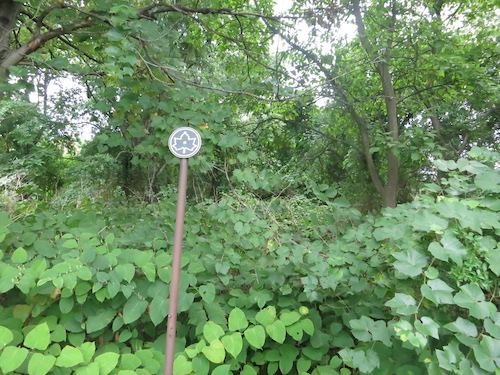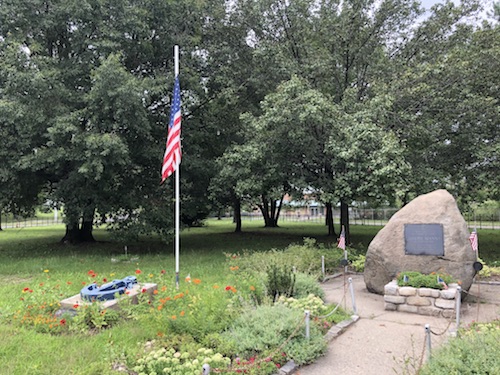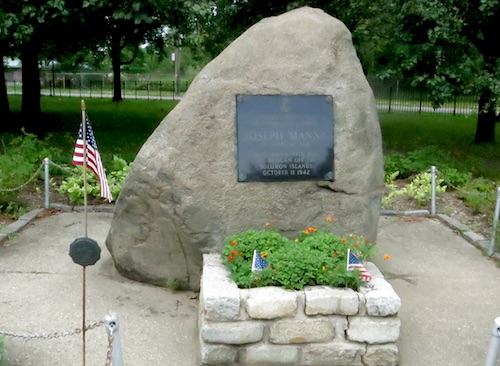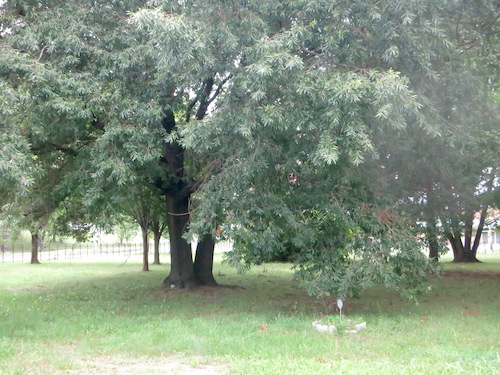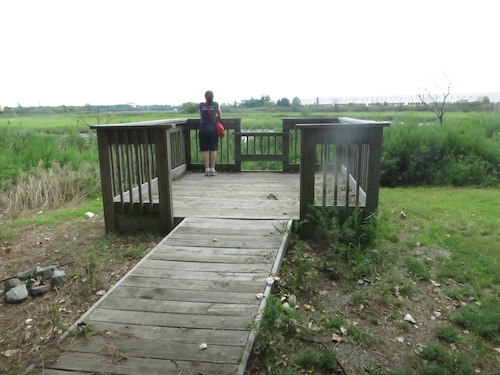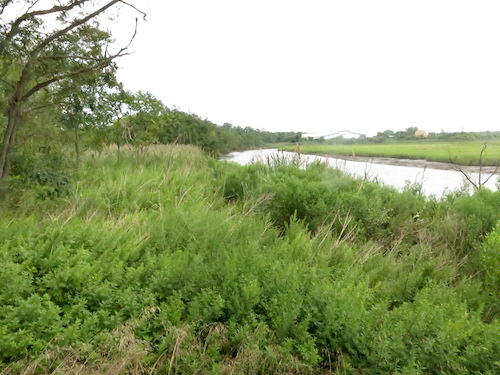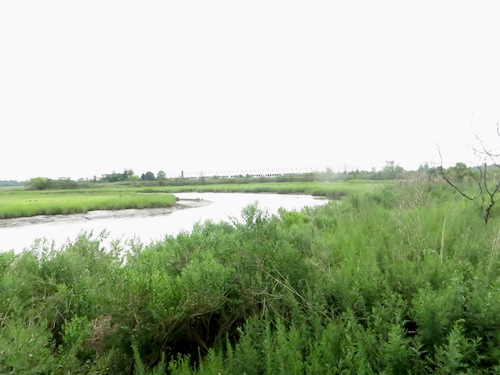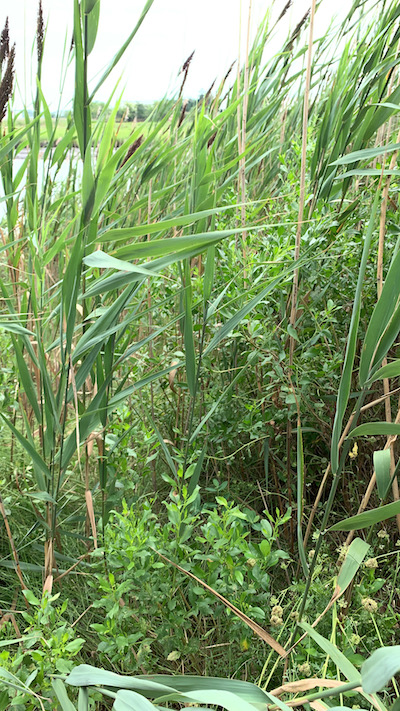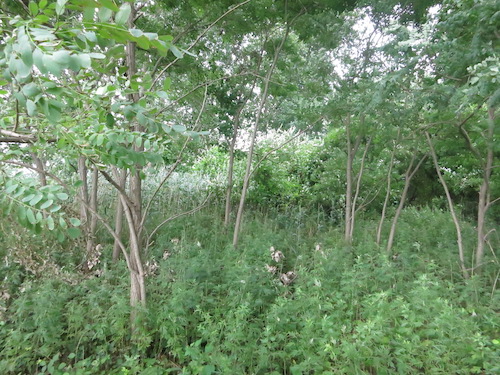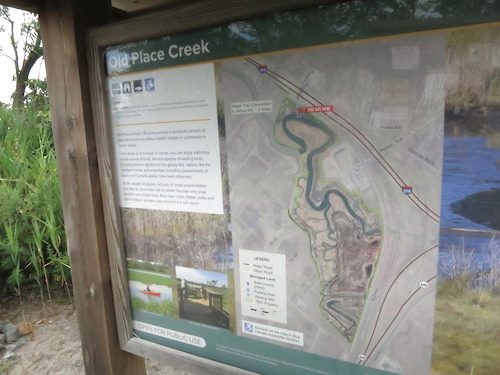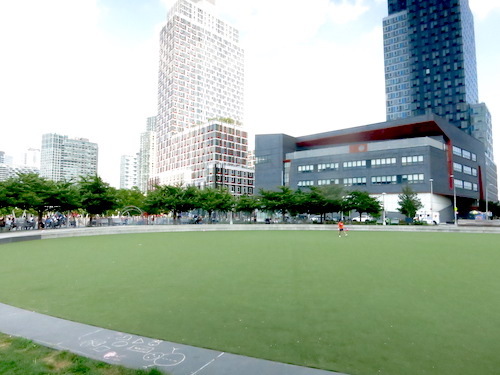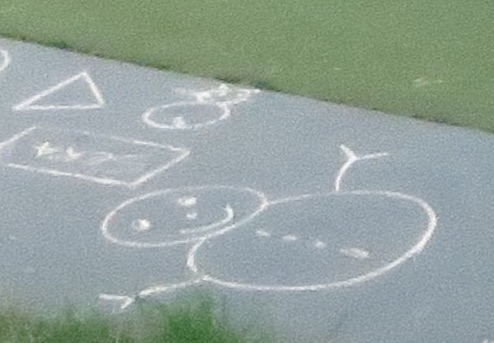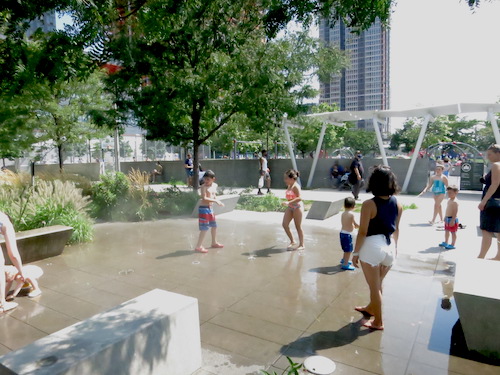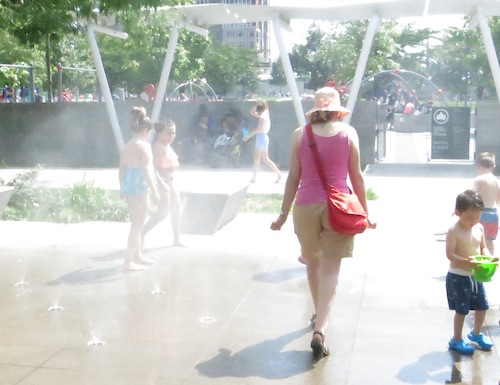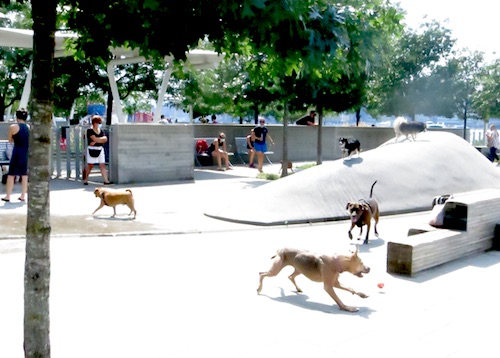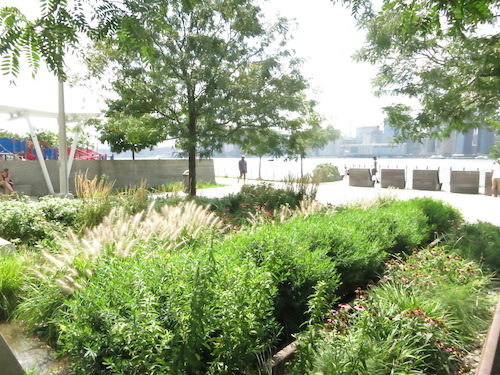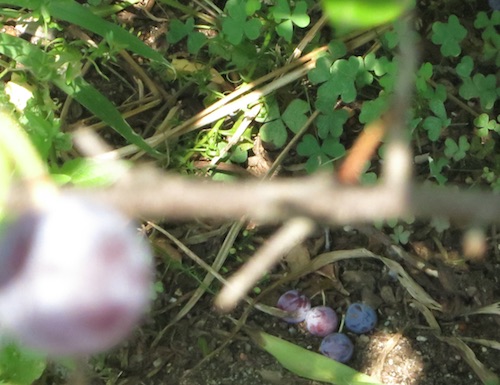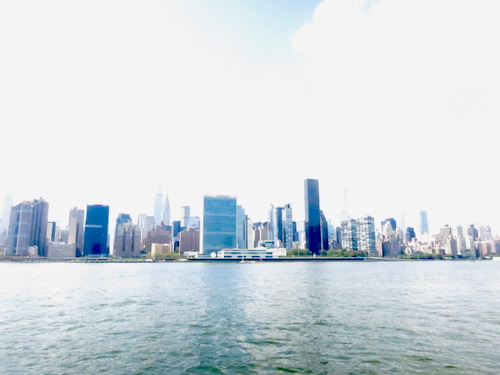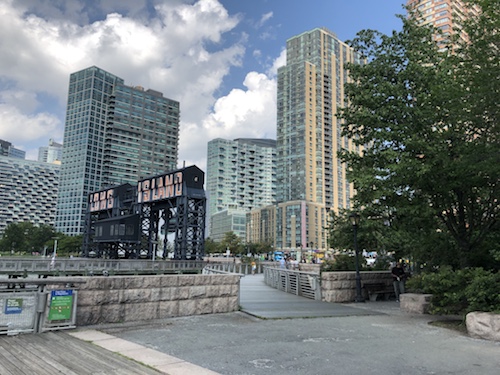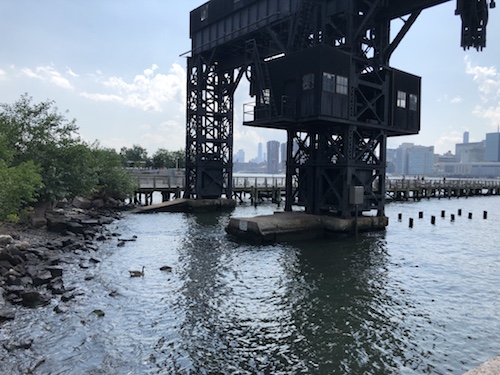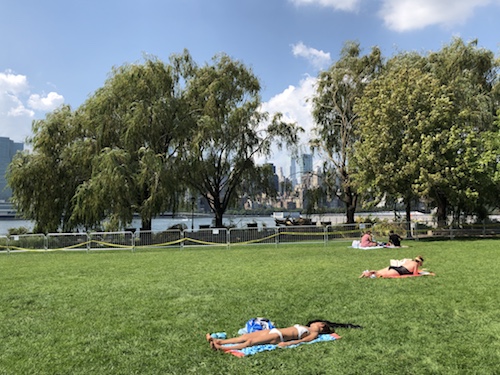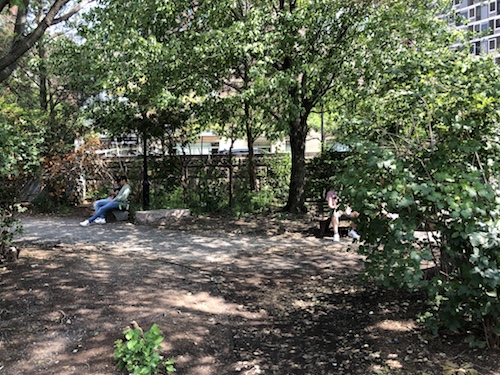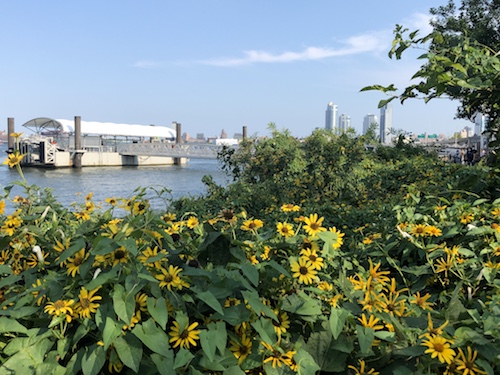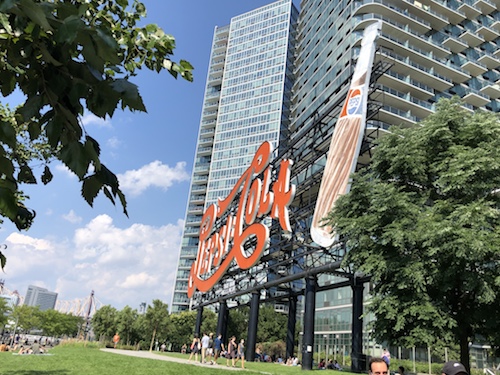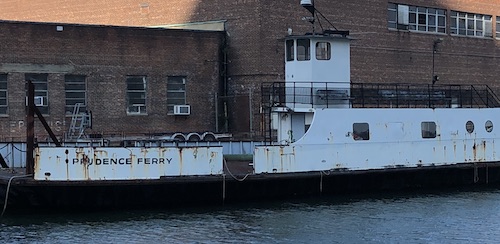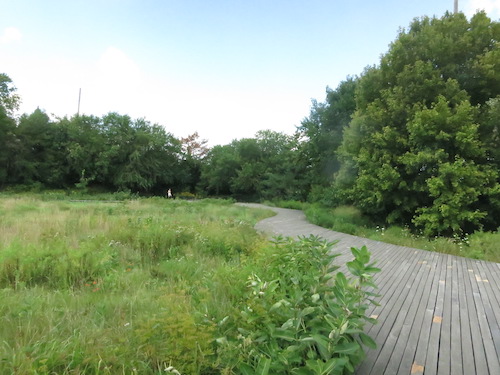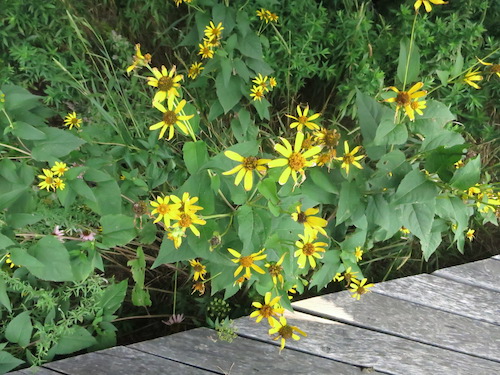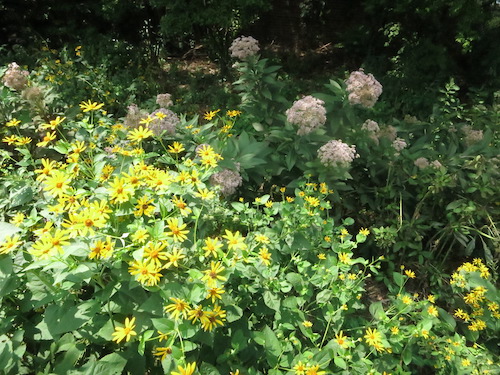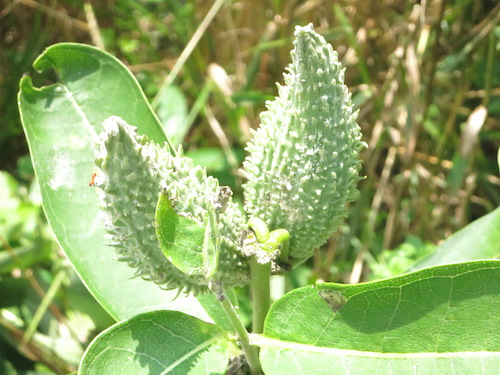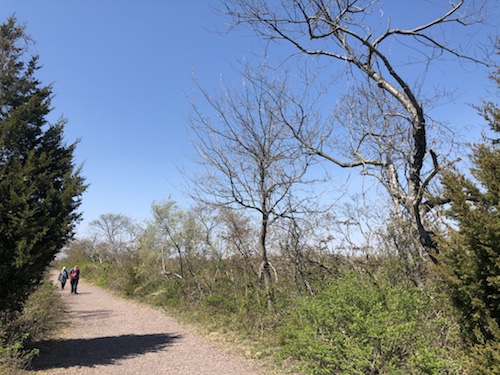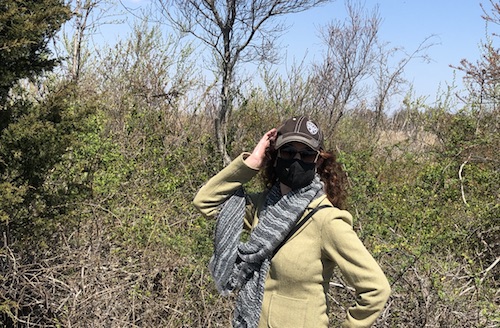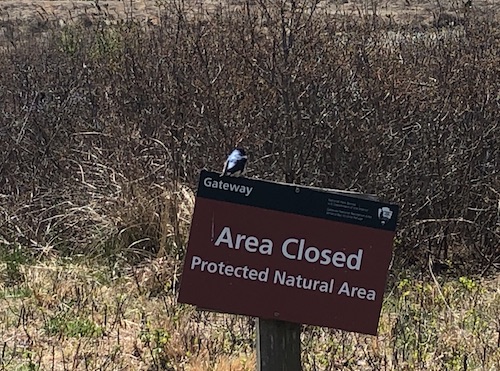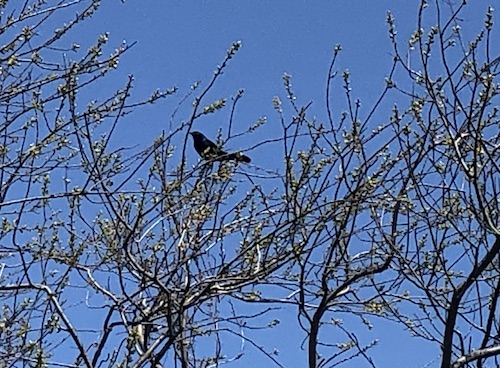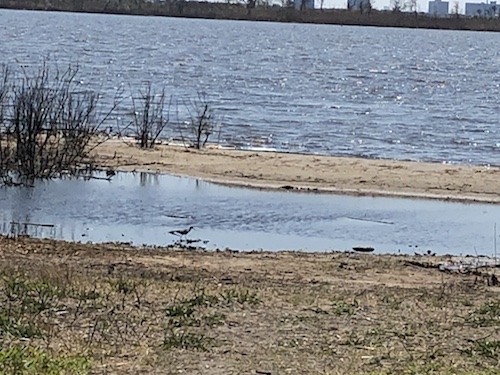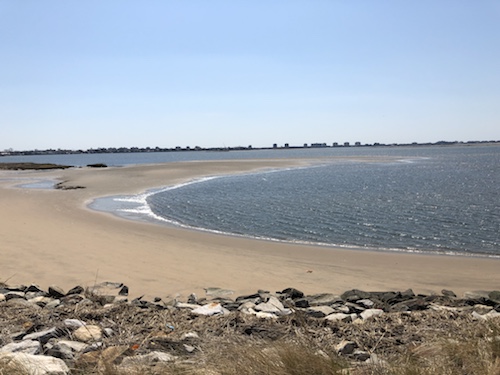On a sunny April day in the Year of the Pandemic, we headed out past Pelham Bay Park in the Bronx to Orchard Beach and Hunter Island, where we could enjoy open space and paths through the woods while maintaining social distancing.
You never know what you're going to find, or be able to access, when you venture far from home in the time of COVID-19. But the Orchard Beach parking lot was open, though only (said the sign) till 3 PM. So we parked and headed first toward the beach. Despite all my exploration of parks over the past decade of keeping this blog, I'd never been here.
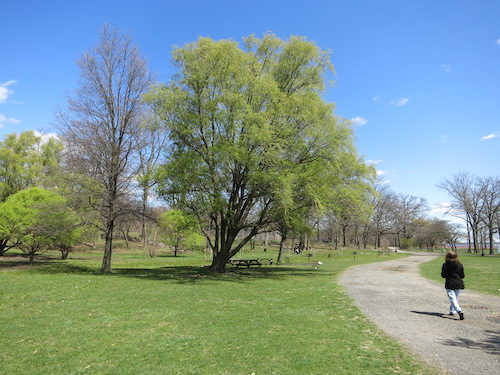
Trash tennis, anyone?
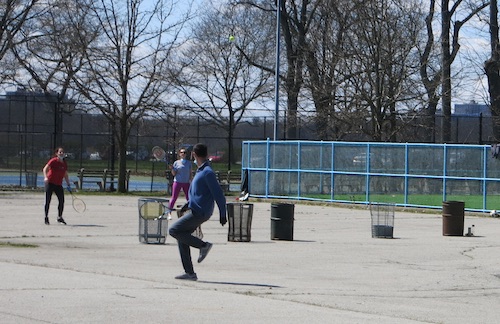
There was plenty of room to keep your distance on the beach. Of course, it wasn't beach weather. We saw only one person dressed for summer.
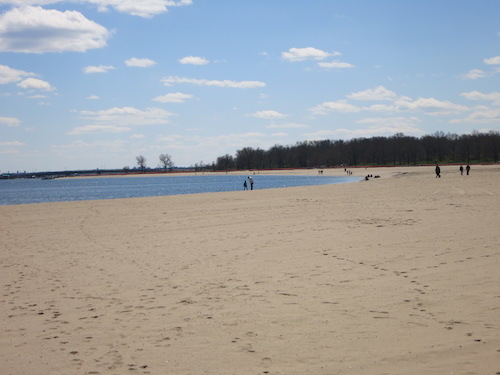
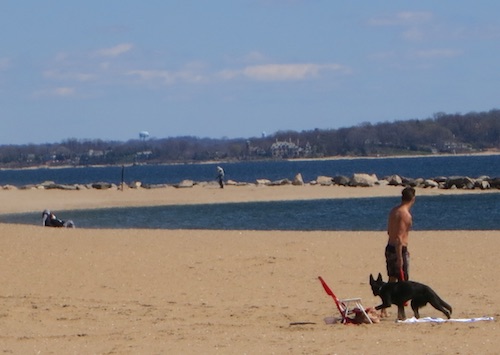
Off the north end of the crescent-shaped beach, the Kazimiroff Nature Trail begins. It's actually the artery for a network of paths that snake through the woods of Hunter Island.
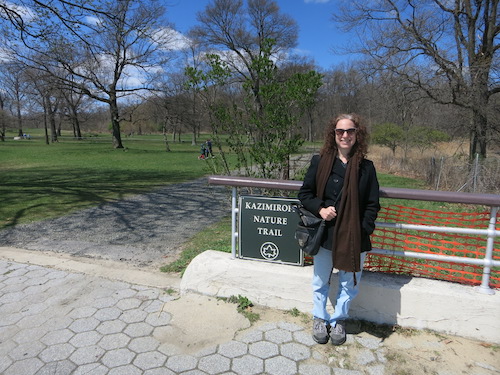
The Siwanoy Indians called this place Lap-Haa-Waach King, "place of stringing beads," since they found shells here to string together for ceremony and currency. (Thanks to the Scenes from the Trail blog, whose photos provide a greener, later-spring view, for this information.) In 1654 the Indians sold this onetime island, now the northern end of the peninsula, to Thomas Pell.
John Hunter bought it in 1804, built a mansion and cultivated a garden. Later it was a popular vacation destination for camping. Robert Moses joined it to the mainland when he filled in an adjacent bay to create today's Orchard Beach.
Thanks to the late historian and preservationist Theodore Kazimiroff, the erstwhile isle has returned to nature. Nothing appears to remain from Hunter's habitation except for some of the wider trails that were once woods roads. Other trails are rougher. The paths are marked with red or blue signposts, but it's easiest to just wander the web of walkways. You're on a small peninsula; you really can't get lost.
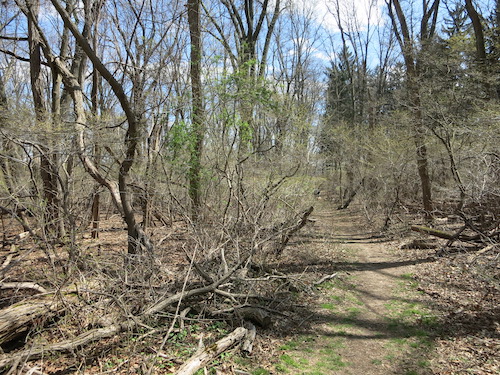
The trails around the edges of the peninsula offer lovely views of Pelham Bay, along with some of its denizens, including swans and egrets.
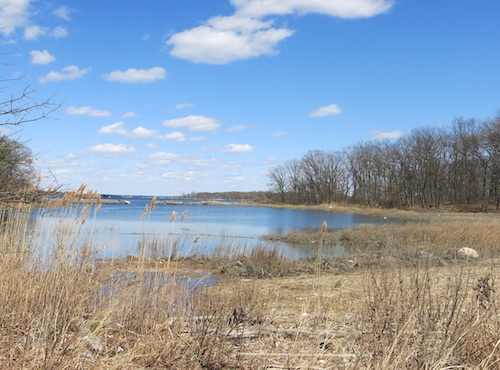
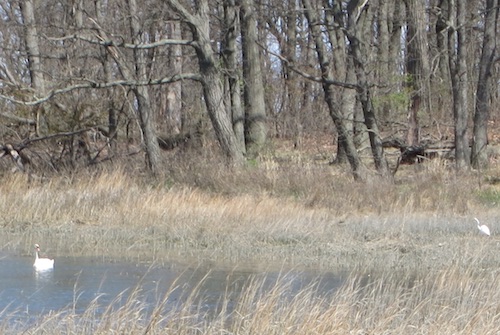


It's well worth trekking to the northern tip, where you'll find sublime striated glacial rock formations.
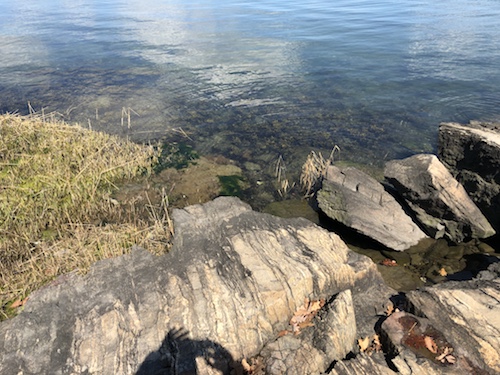
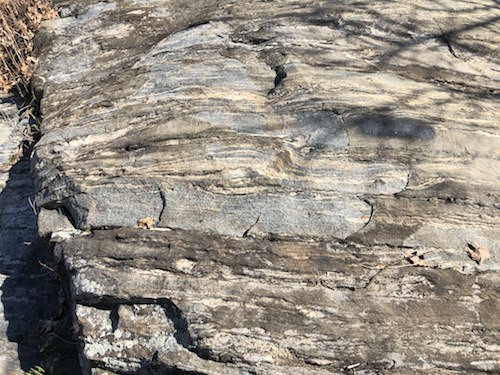
Off the northeastern corner of the peninsula, a fun plank walk takes you across a salt marsh to a tiny rocky island.
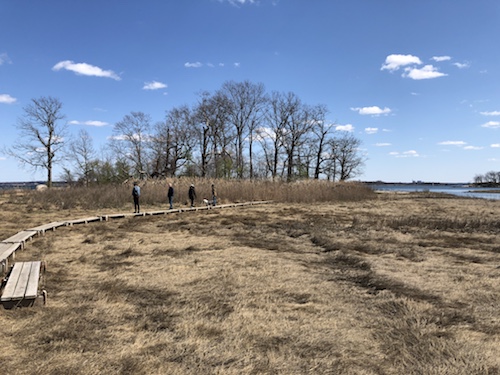
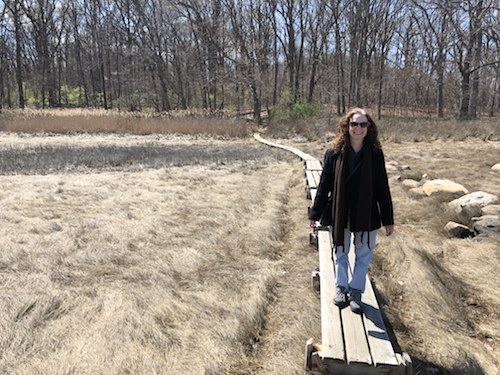
From here you'll find good views of a spit of an isle with dramatic glacial erratics and, further away, green Glen Island, a park in the Westchester town of New Rochelle.
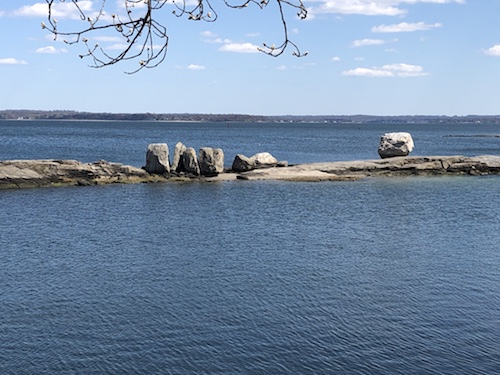
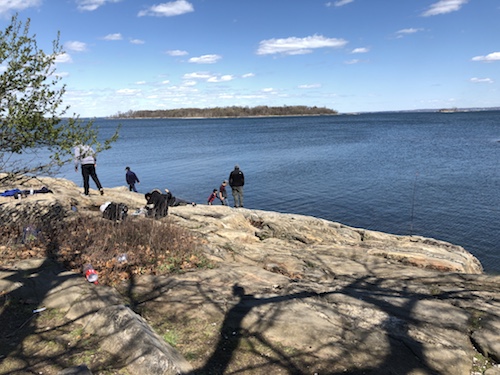
But I'm just as happy in the middle of the woods as I am by the water. A tangle of trees, vines, and fallen leaves left over from autumn, surrounding a not-particularly-remarkable rock outcropping – that's my idea of heaven.
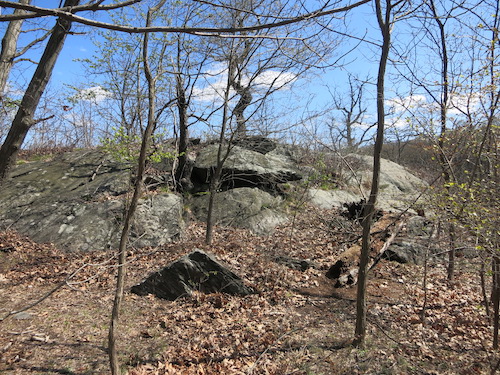
As the pandemic eases and summer comes, our agenda should fill up with more frequent park excursions. There's more to see even at Hunter Island, in fact – the parking lot's purported 3 PM closing time induced us to head back without exploring Twin Island, a small former island connected to Hunter. So we'll see you out there, somewhere in this again-to-be-great city of Gotham.
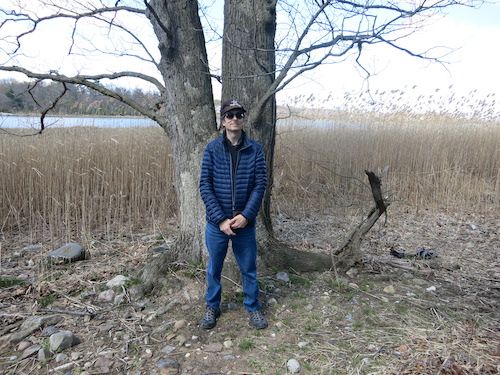
All photos © Jon Sobel, Critical Lens Media
